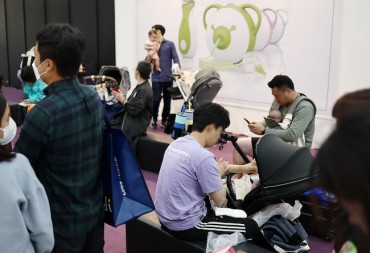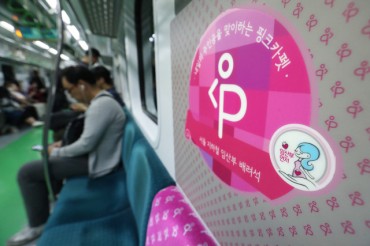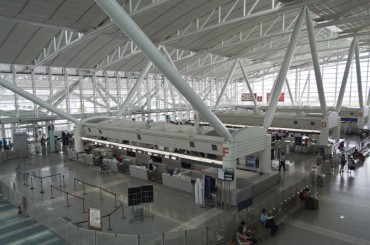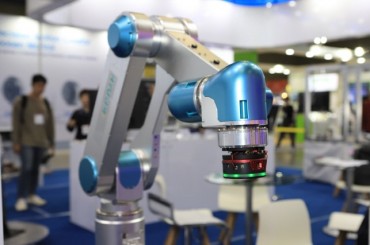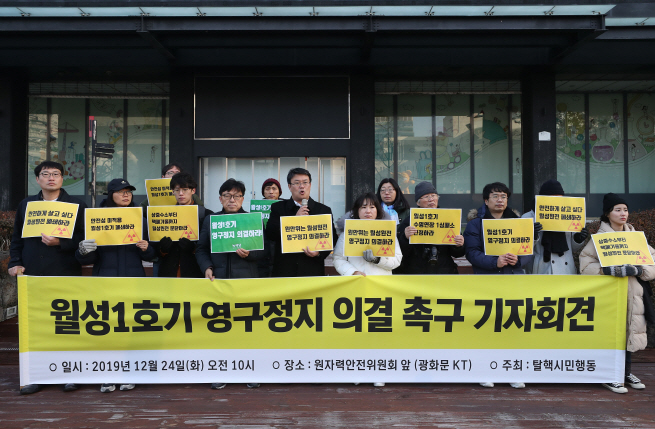
Activists stage a rally in central Seoul on Dec. 24, 2019, calling for a permanent shutdown of the Wolsung-1 reactor. (Yonhap)
SEOUL, Dec. 24 (Korea Bizwire) — South Korea on Tuesday decided to permanently shut down another nuclear reactor in the country in line with a new energy drive centering on promoting sustainable energy sources and reducing dependence on nuclear and fossil fuels.
The Nuclear Safety and Security Commission approved an application by the country’s nulear reactor operator to permanently close the Wolsong-1 in Gyeongju, 370 kilometers southeast of Seoul, whose commercial operation started in 1983.
It follows the shutting down of the Kori-1 plant in 2017.
The decision came 10 months after the Korea Hydro & Nuclear Power Co. (KHNP), the operator of the reactor, filed an application for early closure of the reactor, saying it is losing money due to its low operational rate and rising maintenance costs.
The reactor’s 30-year operational license was renewed through 2022.
The closure of the Wolsong-1 reactor, however, may be delayed as the Board of Audit and Inspection of Korea is currently carrying out an investigation into whether KHNP made a reasonable assessment of the reactor’s economic value.
South Korea earlier announced a new energy blueprint focusing on significantly reducing the country’s dependence on nuclear and fossil fuel-based energy and instead utilizing more sustainable resources.
In line with the move, South Korea is set to retire 11 out of 24 reactors on its soil by the end of 2030.
The proportion of renewable sources in the country’s power generation portfolio will jump to 20 percent by 2030, reaching around 30-35 percent in 2040.
The vision marks a big change from 2017, when renewable sources were responsible for roughly 7.6 percent.
Coal-fired thermal power accounted for 43 percent of South Korea’s power generation in that year, followed by nuclear power with around 27 percent, according to data from the energy ministry.
South Korea says the country’s phase-out of nuclear energy will be carried out in a gradual manner without abrupt changes, and it is currently building two new reactors, the Shin Kori-5 and Shin Kori-6, in southern port city of Ulsan.
(Yonhap)



